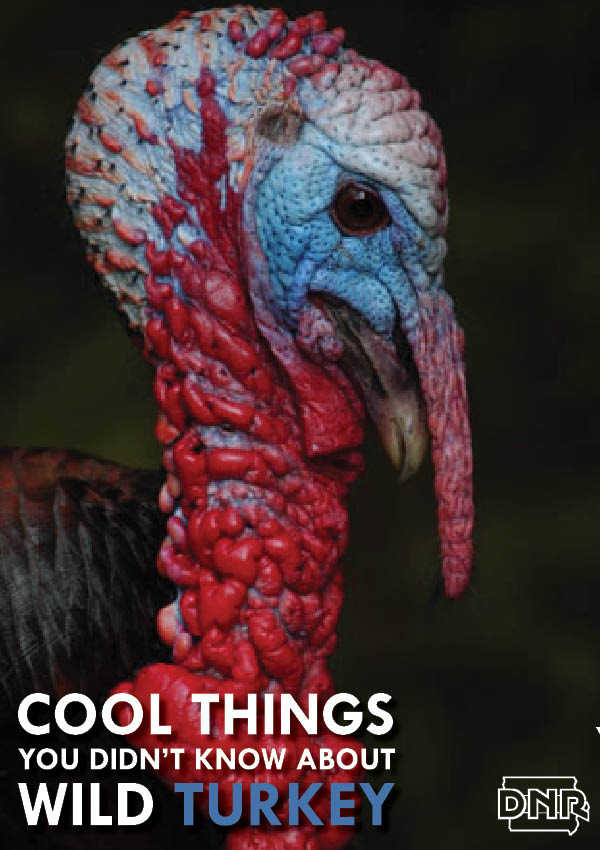
'Tis the season to have wild turkey on the brain! Here are some cool facts you may not have known about wild turkey in Iowa:
There are five kinds of turkey in the U.S.
In Iowa, we have the Eastern subspecies, the largest of all five U.S. subspecies – in Iowa, turkey can get up to 30 pounds.
Turkey were once wiped out in Iowa
Around 1910, the last known wild Iowa turkey was seen in Lucas County. In the 1960s, the bird was reintroduced successfully with birds transplanted from Missouri. Originally, officials thought that they would only be located in the major forest areas of Iowa, but the turkeys quickly adapted to Iowa’s diverse landscape. The first modern turkey season in Iowa was held in 1974. While most parts of the country, especially the east, have a fall turkey hunting tradition, Iowa hunters tend to prefer the spring season.
You had me at gobble, gobble
Turkeys make about 27 different calls. The cluck, yelp, purr and gobble are the ones we think of the most.
The better to see you with
A turkey can see about seven times better than humans and can hear about 10 times better, with no external ear flaps. Their eyes have rods and very few cones, so their eyesight is black and white. This gives them excellent eyesight, since they see in multitudes of grays and can distinguish shapes and movements.
The scoop on scat
If you find turkey scat in the woods shaped like the letter J, it came from a male. Females leave scat that’s more like a rounded plop.
Feathered friends
A turkey has 18 tail feathers. Males’ body feathers are tipped in black, giving them a shiny appearance from a distance. Females have buff covered feathers that allow them to stay hidden while incubating their ground nests, which include 10 to 12 eggs that incubate for 28 days. A turkey’s beard is made of modified feathers that have a hair-like appearance. The beard is usually found on males, but about 7 percent of females will have beards. And in case you’re looking for a cool new word to use, the little flap of skin on the top of a turkey’s head is called a snood.
Turkey treats
Newly hatched baby turkeys, or poults, dine heavily on insects and spiders.
For more on Iowa’s animals, check out our Iowa Wildlife board on Pinterest.